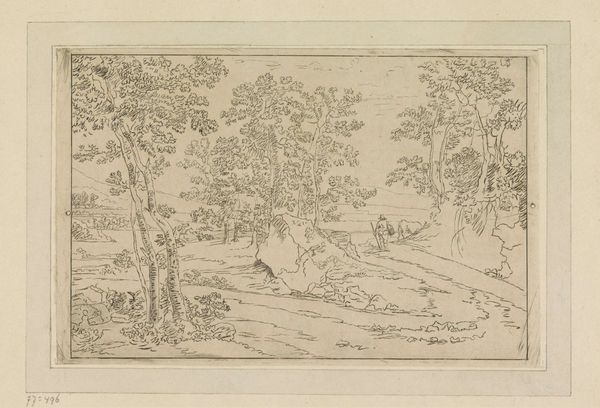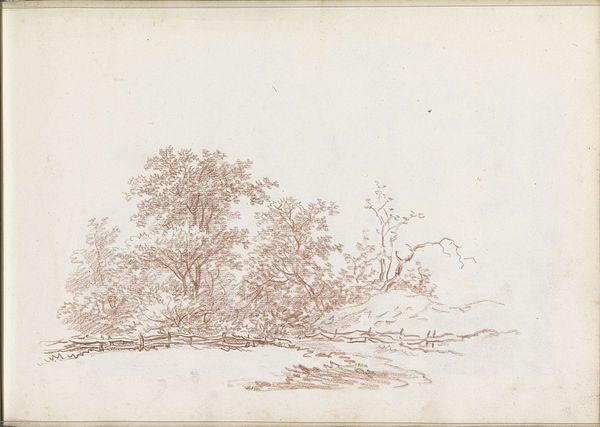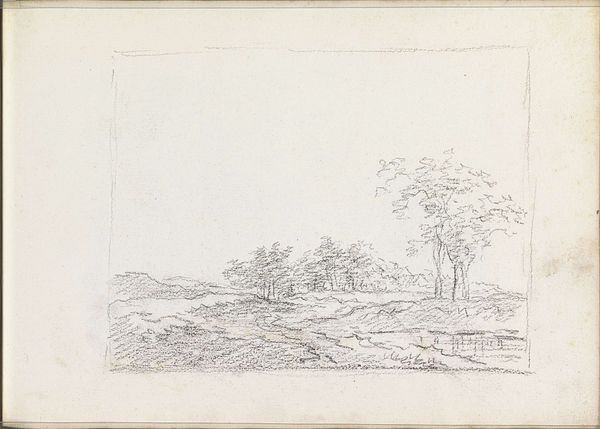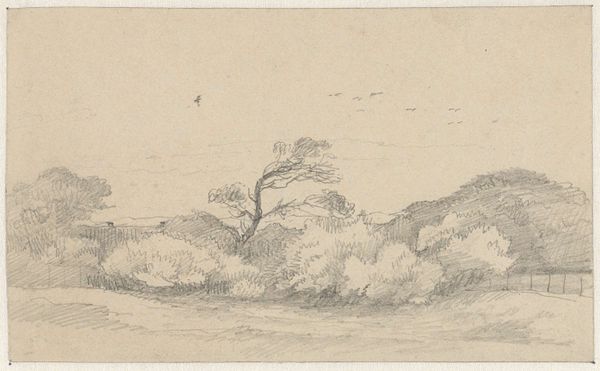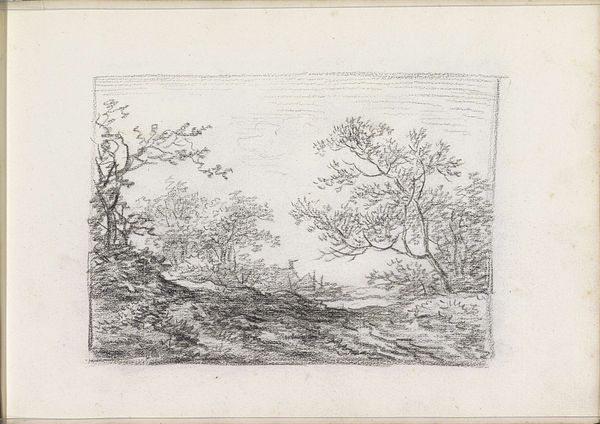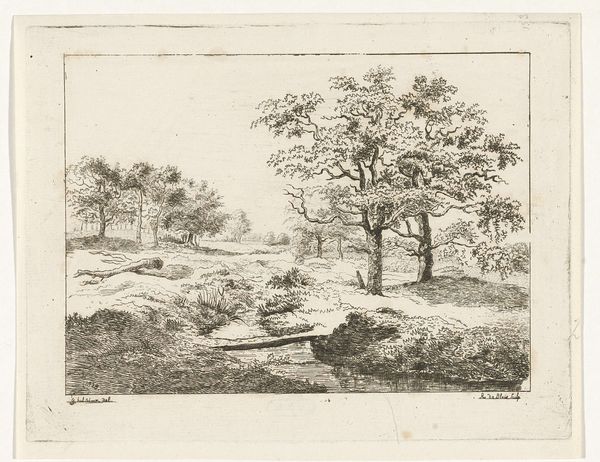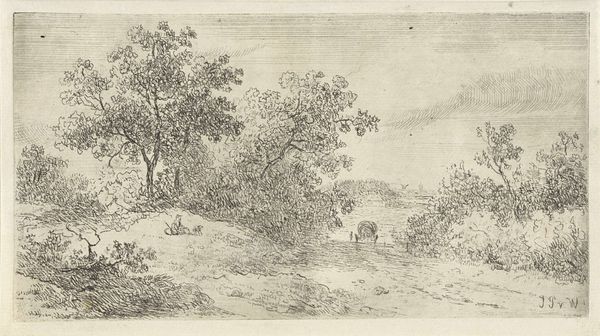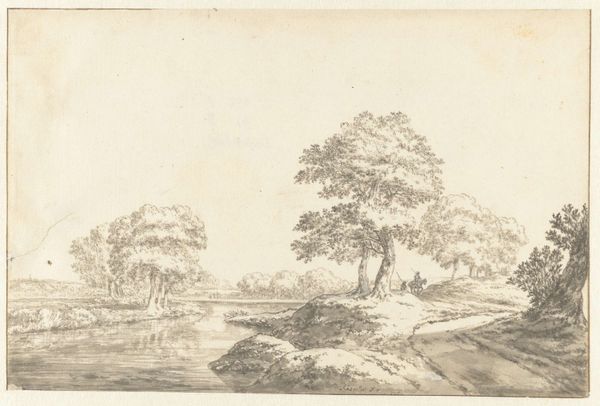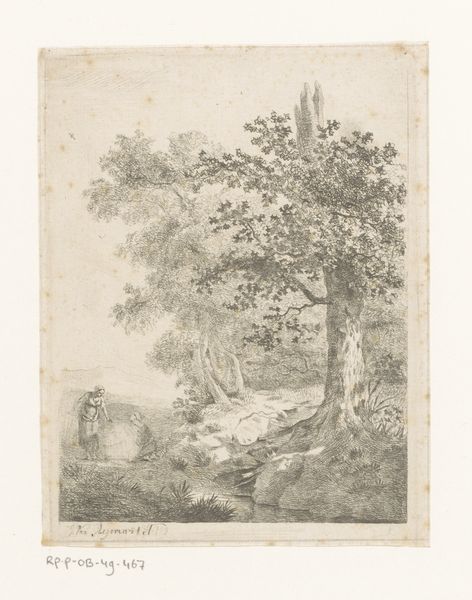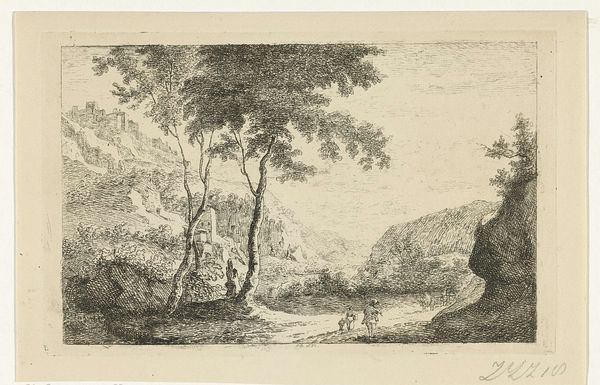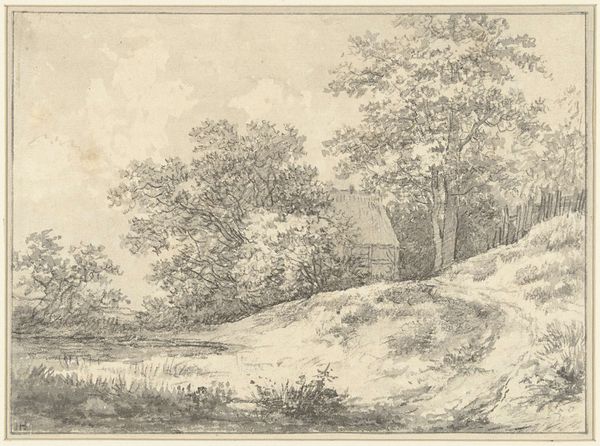
drawing, etching
#
drawing
#
etching
#
landscape
#
etching
#
romanticism
Dimensions: height 254 mm, width 388 mm
Copyright: Rijks Museum: Open Domain
Roeland van Eynden made this drawing, Dijkdoorbraak te Ochten, with pen in gray ink. The image seems to reflect on the place of man in nature, and perhaps even the relationship between government and its people. We see a landscape bisected, dominated on one side by a solitary tree, and on the other by figures on horseback. The social and physical geographies of the Netherlands were deeply intertwined. Keeping the land drained and defended was a constant preoccupation of its inhabitants. A breach in a dike could have catastrophic social and economic consequences for the region. How might this image speak to a time of political or economic instability? We need to look to other records to understand the work better. Archival sources, such as local newspapers, official records, or personal letters, can shed light on the historical context. It is by considering the interaction of the artwork, its social context, and its institutional setting that we can better understand its meaning and significance.
Comments
No comments
Be the first to comment and join the conversation on the ultimate creative platform.

